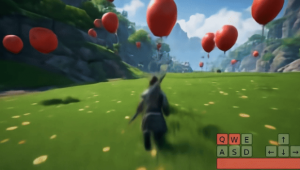Twitter Pictures Come To Windows & Android Phones Save the Rainforest – SiliconANGLE News Roundup
![]() Twitter updated its Windows Phone 8 app today with a number of new features aimed squarely at photographers, including artistic filters, lens app integration, and the ability to play Vine clips in tweets.
Twitter updated its Windows Phone 8 app today with a number of new features aimed squarely at photographers, including artistic filters, lens app integration, and the ability to play Vine clips in tweets.
Though these features are new for Windows, this update isn’t the first addition if its kind. The social network added basic editing and vintage filters to its Android and iOS apps back in December of last year, leaving standard functions strangely absent from the Windows Phone 8 app over the last 6 months.
Another feature of the update affects clips uploaded through Vine, which will now appear directly within tweets, saving users the hassle of tapping through to the dedicated webpage created for each upload.
As for now, there’s still no Vine app for Windows Phone 8 users, but in the meantime the updated Twitter app is available immediately in the Windows Phone store.
Video Killed The Radio Star
One of the world’s leading pianists, Krystian Zimerman, surprised concertgoers by storming off stage because of a fan who was filming the performance on their smartphone.
Zimerman returned moments later and declared: “The destruction of music because of YouTube is enormous.” Zimerman apparently told the audience that he lost recording contracts because of recording company executives, who told him they’ve already seen his performances on Youtube. From that point, he carried on with his recital, but chose not to perform an encore and cancelled a post-concert reception.
Zimerman was performing at the Ruhr Piano Festival in Essen, Germany, where he was said to have spotted a member of the audience filming the concert from the balcony. Festival spokeswoman Anke Demirsoy spoke of the events after the performance, saying “He noticed someone up in the choir seats filming the concert on their smartphone…He asked them to stop, but they didn’t. So he interrupted the recital and walked off stage.”
According to London’s Royal Albert Hall, filming live events is not a problem, so long as it does not disturb the audience or performance.
Quantum Computing Is Finally Here…
![]() Google, NASA, and the non-profit Universities Space Research Association recently announced the formation of the Quantum Artificial Intelligence Lab, and seeded it with a brand new 512 qubit D-Wave 2 quantum computer.
Google, NASA, and the non-profit Universities Space Research Association recently announced the formation of the Quantum Artificial Intelligence Lab, and seeded it with a brand new 512 qubit D-Wave 2 quantum computer.
Quantum computers, such as Google’s, are far better at solving optimization problems associated with machine learning than classical computers. They do so by keeping their niobium chips to a tiny fraction of a degree above absolute zero, turning them into superconductors. Instead of solving problems by systematically switching transistors off and on, the superconducting chips are capable of keeping qubits between stages, allowing the system to consider multiple problems simultaneously. It is the ability to hold two conflicting results at the same time that makes quantum computing such efficient solvers of optimization problems. Because of this, the D-Wave is capable of finding solutions up to 3,600x faster than traditional computers.
Google has already developed some algorithms for their new system, and now that they have the computing power of atoms, expect to see some exciting news coming from Google’s AI lab, in the coming months.
A French Victory?
The France-based business, Pricing Assistant has emerged victorious in this year’s Startup Competition at the LeWeb Conference in London.
The company monitors online retailers’ rivals, sending alerts when prices change, allowing businesses to adjust their prices automatically in order to stay competitive. The LeWeb startup competition began with 16 teams pitching their ideas during the 2 days of the conference. A panel of judges whittled the ideas down to three finalists.
According to the judges, the final decision was a close one, but in the end Pricing Assistant took first place. The final decision was said to be so close that one of the judges noted that he’d be interested in talking to all three finalists about possible future investments.
Wikipedia Just Got Graphic
![]() Wikimedia is preparing to release its new ‘What-You-See-Is-What-You-Get’ visual editor for English-language Wikipedia articles starting in July.
Wikimedia is preparing to release its new ‘What-You-See-Is-What-You-Get’ visual editor for English-language Wikipedia articles starting in July.
The organization currently uses a special markup language called WikiText, but it has been working on a visual editor for several years, and according to a representative, the editor was the most challenging software project the Wikimedia Foundation has ever worked on.
Starting June 17th, randomly-selected Wikipedia users will start seeing this new VisualEditor by default, so Wikimedia can take user feedback and iron out bugs. For now, you can still try it out for yourself by enabling the VisualEditor in your preferences section under the editing tab. Wikimedia only asks that users submit any bugs they happen to come across.
Starlite – Star-Might…Not
Starlite, the plastic capable of withstanding unimaginable heat, was invented during the 1980s by the unlikely Maurice Ward, a ladies hairdresser from Yorkshire. He never revealed how it was made, only saying that it contained 21 organic polymers, co-polymers, and ceramics.
In lab tests, it has withstood the heat from a nuclear flash, endured temperatures three times hotter than the melting point of diamonds, and it can be shaped and molded into almost any form.
An egg painted with Starlite was blasted with a blowtorch at twenty-five hundred degrees Celsius for several minutes, and the surface of the egg was only lukewarm, leaving the egg totally uncooked.
Ward was so paranoid about his formula, that he never allowed anyone to keep a sample, flat-out refusing to let anyone license it. Unfortunately, in 2011, nearly 30 years after Starlite was invented, Ward died, leaving no record of the formula.
Some say his family keep it locked away, others claim it was a huge hoax the whole time. The world may never know.
Vine Copycat Purrs For China
![]() AVOS Systems, founded by YouTube’s Chad Hurley and Steve Chen, has just launched a Chinese version of the popular video app Vine.
AVOS Systems, founded by YouTube’s Chad Hurley and Steve Chen, has just launched a Chinese version of the popular video app Vine.
Given the name Wan-Pai, the app lets you record video in the same manner as Vine, by holding a finger to the screen to record, and letting go to pause. Unlike Vine, however, Wan-Pai has the ability to add audio and video filters, and it will even let you play videos backward.
The app’s functions are very similar to Vine, including the famous six second limit, and the content stream is also very Vine-like, except for the salmon theme color instead of Vine’s green.
Currently there is no auto-play, so users must tap each clip to get it to play, but things like comments and likes are all in the same place. iOS and Android users can get their hands on Wan-pai immediately by downloading it from their respective app stores.
Xobni, Yahoo, Zesty!
Yahoo, continuing with their shopping spree, is in serious discussions to buy the address book app maker Xobni. The two companies have been talking for a while, but according to sources, a buyout is closer now than ever before.
Sources say that Xobni could be a perfect fit for Yahoo’s mail and productivity tools, as it neatly creates automated profiles for each email contact, so it falls neatly in line with Yahoo’s latest focus on mobile applications. Even though Xobni has raised more than $40 million, it has never had massive success despite walking away from a buyout from Microsoft in 2008 for about $20 million. Since then, Xobni expanded from making just an Outlook plugin to supporting Gmail, Yahoo Mail and iCloud, and it created its Smartr Contacts apps for Android and iPhone.
Meanwhile, Yahoo has been buying a bunch of mobile app companies, including Summly for $30 million, and Tumblr for $1.1 billion. Rumors are that Xobni and even Foursquare could join the rest of Yahoo’s acquisitions very soon.
Save The Trees – Throw Away Your Android
![]() A new project called Rainforest Connection is taking recycling to the next level by using discarded Android phones to protect the rainforest.
A new project called Rainforest Connection is taking recycling to the next level by using discarded Android phones to protect the rainforest.
Using a network of devices located at various points in the Air Tarusan reserve in western Sumatra, Rainforest Connection is taking old cellphones and turning them into monitoring devices to prevent illegal logging. Donated Android smartphones are being modified to use solar power before dangled from trees with their microphones switched on. When the handsets pick up the sound of a chainsaw, they relay an emergency message to local rangers who can then intervene.
Though it’s not the most advanced method, the Rainforest Connection is a great example of how recycling can directly help the environment, which is something everyone can appreciate.
And that’s all for today’s news. If you want to keep up with this and more tech news, watch us every weekday morning on NewsDesk with Kristin Feledy.
photo credit: mkhmarketing via photopin cc
photo credit: jurvetson via photopin cc
photo credit: futureatlas.com via photopin cc
photo credit: Stuck in Customs via photopin cc
photo credit: Duda Arraes via photopin cc
writing credit: Andrew E. Lowe
A message from John Furrier, co-founder of SiliconANGLE:
Your vote of support is important to us and it helps us keep the content FREE.
One click below supports our mission to provide free, deep, and relevant content.
Join our community on YouTube
Join the community that includes more than 15,000 #CubeAlumni experts, including Amazon.com CEO Andy Jassy, Dell Technologies founder and CEO Michael Dell, Intel CEO Pat Gelsinger, and many more luminaries and experts.
THANK YOU













